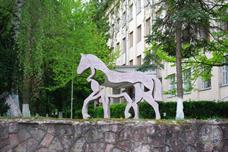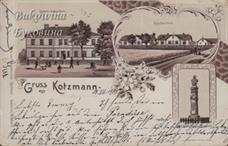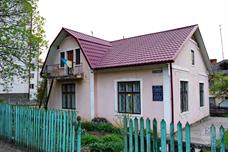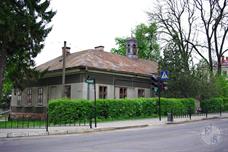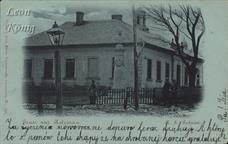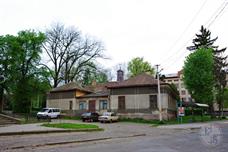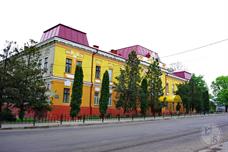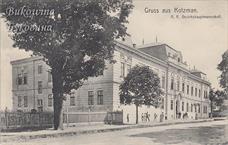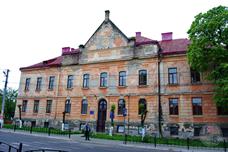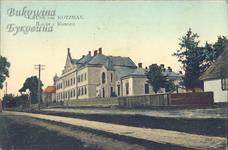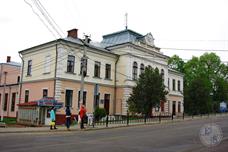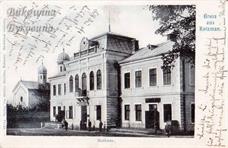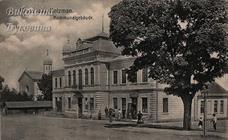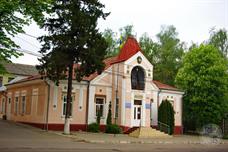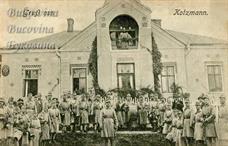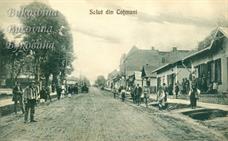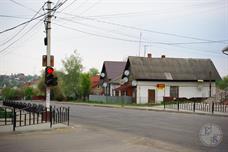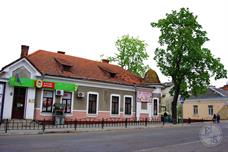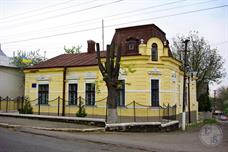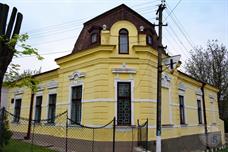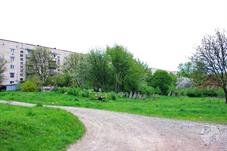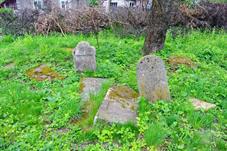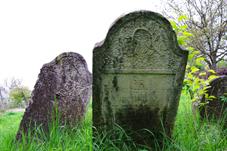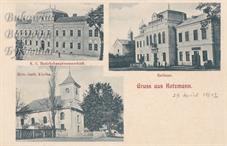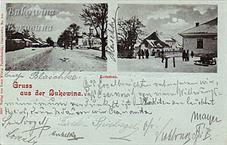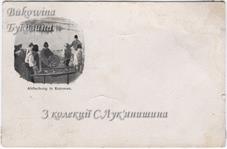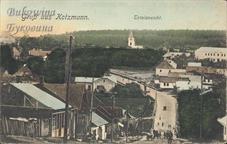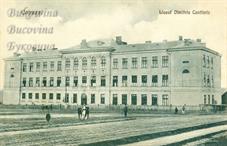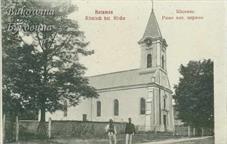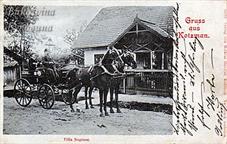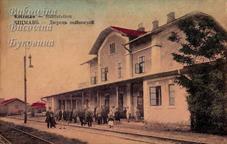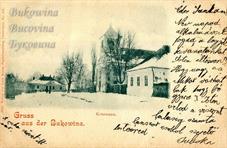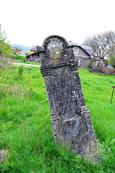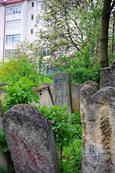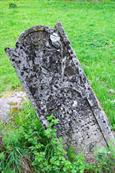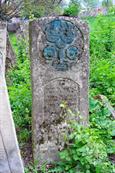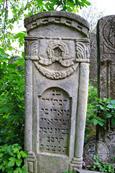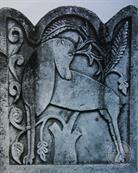Kitsman
The oldest written mention of Kitsman (ukr. Кіцмань) dates back to 1413. In the Middle Ages Kitsman belonged to the bishop and other major feudal lords. In 1798, it became a city, and eventually - the center of the county. In the 19 - beginning 20 centuries - town Kottsman of the province of Bukovina as part of Austria-Hungary. In 1918-40 years - as part of Romania, since 1940 - the Ukrainian SSR.
A few more historical photos.
In 1910 there were 666 Jews in Kitsman,
in 1930 - 647 Jews (16.9%).
In the beginning of the 19th century several Jews from Galicia arrived in Kitsman, but the Austrian authorities did not allow them to settle in the city. The Jewish community was formed here only in the late 19th century.
The Jews of Kotzman had their own community. In 1914, Anschel Dauber was the leader and his deputy was Aron Weintraub. The members of the community council were Salomon Merdlinger, Samuel Fritz, Jakob Beer-Gruen, Chaim Schorr, Hersch Kreisberger, Leibisch Rosenblatt, Samuel Oberwaeger, Hermann Schulmann, Markus Stier, Abraham Schorr, Moses Tannenbaum, Alter Tennenblatt and Hersch Zimmer.
The rabbi was Samuel Schaechter, followed by David Fraenkel-Hager. The rabbi's deputy was Berl Teitelbaum. The Secretary was Josef H. Herzan, Jankel Seidner was director of the Endowment for the Poor and Leibisch Rosenblatt directed the Organization for the Support of the Sick. The community had a synagogue and a cemetery. It also provided for the religious needs of the minyan organizations 3 in Nepolokautz, Luzan and Oroszeny. There were also two smaller prayer houses in Kotzman.
In the early 20 century in Kitsman there were 3 synagogues, Bikur Hoylim, 2 other charitable institutions, a Jewish hospital and a printing house; in the printing house was printed the Jewish calendar, popular in the region.
The Jews of Kitsman were mainly engaged in trade in local agricultural products and crafts (tailoring and shoemaking).
In the years 1926-36. the rabbi in the town was Boruch Hager from the dynasty of the Vizhnits, who founded the Talmud Torah here. Wolf Meiselmann was an outstanding teacher at this school.
In the same period, the Zionist organization Dorshei Zion was established in Kitsman under the leadership of Dr. J. Sperber and later Dr. Leo Auerbach stood at the helm of this organization.
In 1941, a Jewish school was closed.
July 5, 1941 Kitsman occupied the Romanian troops. On July 9, 1941, 27 Jews were killed in the town.
In October 1941, the Jews of Kitsman - 560 people - were deported to Chernivtsi.
After 1945, 8 Jewish families returned to Kitsman. Later, most of them went to Israel.
in 1930 - 647 Jews (16.9%).
In the beginning of the 19th century several Jews from Galicia arrived in Kitsman, but the Austrian authorities did not allow them to settle in the city. The Jewish community was formed here only in the late 19th century.
The Jews of Kotzman had their own community. In 1914, Anschel Dauber was the leader and his deputy was Aron Weintraub. The members of the community council were Salomon Merdlinger, Samuel Fritz, Jakob Beer-Gruen, Chaim Schorr, Hersch Kreisberger, Leibisch Rosenblatt, Samuel Oberwaeger, Hermann Schulmann, Markus Stier, Abraham Schorr, Moses Tannenbaum, Alter Tennenblatt and Hersch Zimmer.
The rabbi was Samuel Schaechter, followed by David Fraenkel-Hager. The rabbi's deputy was Berl Teitelbaum. The Secretary was Josef H. Herzan, Jankel Seidner was director of the Endowment for the Poor and Leibisch Rosenblatt directed the Organization for the Support of the Sick. The community had a synagogue and a cemetery. It also provided for the religious needs of the minyan organizations 3 in Nepolokautz, Luzan and Oroszeny. There were also two smaller prayer houses in Kotzman.
In the early 20 century in Kitsman there were 3 synagogues, Bikur Hoylim, 2 other charitable institutions, a Jewish hospital and a printing house; in the printing house was printed the Jewish calendar, popular in the region.
The Jews of Kitsman were mainly engaged in trade in local agricultural products and crafts (tailoring and shoemaking).
In the years 1926-36. the rabbi in the town was Boruch Hager from the dynasty of the Vizhnits, who founded the Talmud Torah here. Wolf Meiselmann was an outstanding teacher at this school.
In the same period, the Zionist organization Dorshei Zion was established in Kitsman under the leadership of Dr. J. Sperber and later Dr. Leo Auerbach stood at the helm of this organization.
In 1941, a Jewish school was closed.
July 5, 1941 Kitsman occupied the Romanian troops. On July 9, 1941, 27 Jews were killed in the town.
In October 1941, the Jews of Kitsman - 560 people - were deported to Chernivtsi.
After 1945, 8 Jewish families returned to Kitsman. Later, most of them went to Israel.
Sources:
- Russian Jewish encyclopedia. Translated from Russian by Eugene Snaider
- S. J. Seidmann. Kotzman / Geschichte der Juden in der Bukowina (History of the Jews in the Bukowina), vol. II. Edited by Hugo Gold. Tel Aviv: Olamenu, 1962. Translated from German by Jerome Silverbush z”l, JewishGen, Inc
Photo:
- Eugene Shnaider (2016)
- David Goberman. Jewish tombstones in Ukraine and Moldova. St. Petersburg, 2001
- Postcard collection of Eduard Turkevych
- Russian Jewish encyclopedia. Translated from Russian by Eugene Snaider
- S. J. Seidmann. Kotzman / Geschichte der Juden in der Bukowina (History of the Jews in the Bukowina), vol. II. Edited by Hugo Gold. Tel Aviv: Olamenu, 1962. Translated from German by Jerome Silverbush z”l, JewishGen, Inc
Photo:
- Eugene Shnaider (2016)
- David Goberman. Jewish tombstones in Ukraine and Moldova. St. Petersburg, 2001
- Postcard collection of Eduard Turkevych
Chernivtsi district, Chernivtsi region

- Home
- Shtetls
- Vinnytsia region
- Volyn region
- Dnipro region
- Donetsk region
- Zhytomyr region
- Zakarpattia region
- Zaporizhzhia region
- Ivano-Frankivsk region
- Kyiv region
- Kropyvnytskyi region
- Luhansk region
- Lviv region
- Mykolayiv region
- Odessa region
- Poltava region
- Rivne region
- Sumy region
- Ternopil region
- Kharkiv region
- Kherson region
- Khmelnytskyi region
- Chernihiv region
- Chernivtsi region
- Cherkasy region
- Crimea
- Synagogues
- Cemeteries
- Objects & guides
- Old photos
- History
- Contact
Jewish towns of Ukraine
My shtetl
My shtetl
Donate
Jewish towns of Ukraine
